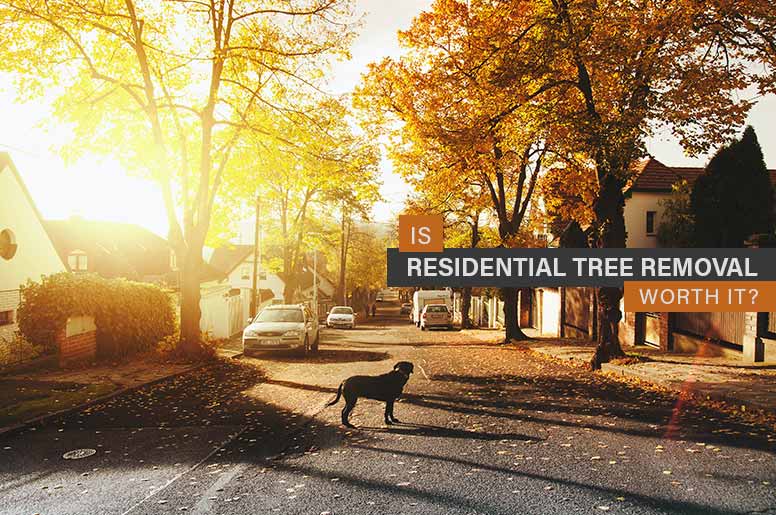Is Residential Tree Removal Worth It? Find Out the Answers Here
Are you wrestling with yourself on whether to get residential tree removal for a particularly problematic tree? You’re not alone. As great as trees are for improving your home’s curb appeal, there comes a time when a tree just has to go — especially when it becomes a safety hazard for the family.
With that said, the cost to remove a tree can be quite hefty yet offers several benefits to homeowners. In this guide, we’ll shed light on how and when tree removal can be a smart investment, all things considered.
How much does residential tree removal cost?
The range of prices for residential tree removal services can vary. The average cost is close to $900, but it’s common for a job to cost as much as $4,000. Sounds like a lot, right? This is because removalists have to take other factors into consideration when setting the price for the service. For instance, trees that are growing quite close to the structure of a house or near service wires take a lot longer to cut down, so they cost more than the estimated average. Larger trees are also more difficult to remove. In short, it all comes down to the complexity and duration of the work.
How can tree removal be helpful?
Let’s say you have a dead tree in your yard. It may not look harmful, but deadwood can be a breeding ground for various pests and animals. There could also be serious structural defects that have eluded you but are obvious to an arborist.
Another situation that can benefit from removing tree services is when a tree is leaning dangerously, whether as a result of a recent storm or from a gradual weakening in the root system. Don’t wait to have the tree inspected by a professional tree lopper and, if necessary, removed right away.
Other situations to remove a tree:
- A widespread fungal problem that’s compromising the integrity of the tree
- The tree stands in the way of a home development project
- The tree sheds too many leaves and costs too much to maintain
- A third of the tree’s interior is hollow or rotten
- More than 50% of the tree’s root system is damaged
- The tree is growing too close to power lines and is dangerous to thin down
- The tree’s roots are damaging nearby structures
- Larger branches have started falling off the tree
DIY tree removal: should you consider it?
There are risks associated with removing a tree, especially when using a chainsaw and other power tools. If you don’t have the appropriate safety gear and have no experience whatsoever, it’s not a job you want to do yourself
Even if you know how to use power tools, a lack of knowledge dealing with trees can introduce many potential dangers such as falling branches or even unintentionally putting more weight on one side of the tree and causing it to fall.
Because of these risks, many people believe it’s wise to seek out the help of tree specialists rather than suffer the consequences of a tree felling job gone wrong. Moreover, damages to your property that are caused by a botched DIY tree removal is unlikely to be covered by your home insurance, so it’s best to hire trained people.
Is it possible to find affordable tree services?
The answer is yes. Residential tree removal can be within your budget. All it takes is a little looking around and comparing quotes from different arborists or tree service companies. But make sure you only work with certified arborists or tree surgeons. It’s not worth it to sacrifice quality work just to save a couple of bucks. If something goes wrong, unlicensed arborists won’t be liable to pay for damages or injuries during the job, which can end up costing you more in the long run.

